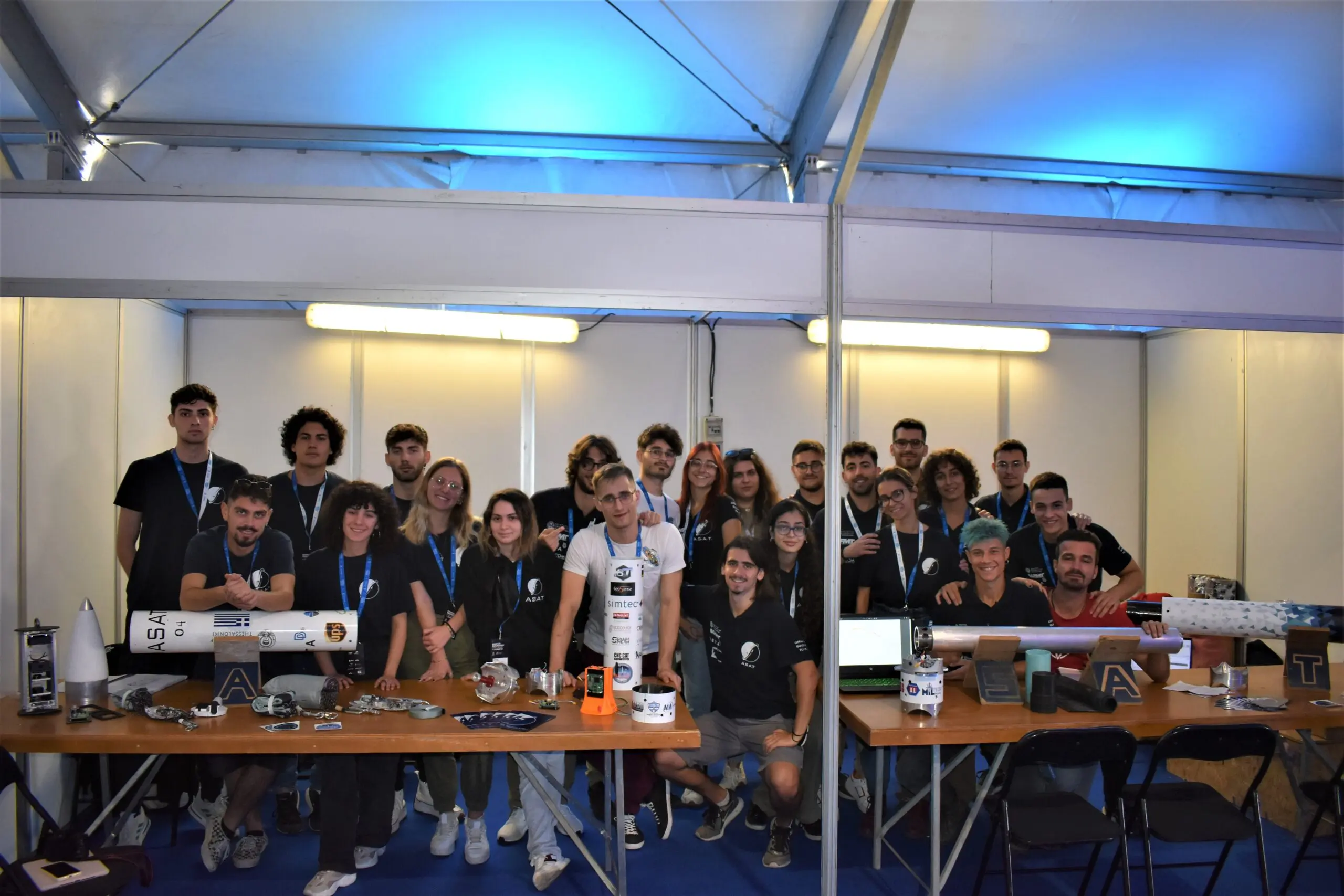Looking back to last year, the greatest achievement of the Aeronautics Department was the manufacturing and flight of the Anemone UAV. It is the first R&D project of the department, and it equipped us with valuable experience and expertise on different manufacturing methods than the ones we had utilized in the past.


The UAV’s mission revolves around its usage as an experimental platform. Its payload are electronic boards with sensors for taking measurements. These measurements have to do with flight parameters, such as speed, acceleration (linear and angular), coordinates, temperature and altitude. Acquiring such data is crucial for developing future aircraft.
During the design phase, a wing with a high aspect ratio was selected, so as to reduce drag, and thus increase the efficiency. Its wingspan is 2 meters, while the selected airfoil is NACA 6413. The tail configuration is the so called T-tail, with the tail appearing to have a characteristic ‘T’ shape. The fuselage, which is the main body of the aerial vehicle, has a length of 1.3 meters and a varying diameter. The landing system is a tail-dragger, with two wheels placed near the middle of the fuselage and one back at the tail. This system ensures a weight reduction and simplicity in manufacturing.

The manufacturing material is carbon fiber, a composite material that provides high durability, as well as low weight. Applying the vacuum infusion method, the Aircraft’s final parts are constructed from molds. Inside the fuselage, there is a part specifically designed for the placement of the electronic components. Around this part, instead of carbon fiber, fiberglass has been used, so that GPS signal can pass through it. The final assembly ensures that all components are connected properly, in order to form the final UAV.


Anemone’s motor is electrical and is powered through a LiPo (Lithium Polymer) battery of 11.1V. A propeller is connected to the motor axis and spins, in order to provide the thrust required for the movement. A 433 MHz receiver communicates with the remote controller on the ground, so that the pilot can fly the aircraft.

Anemone’s maiden flight took place on October 6th 2021 and was deemed a success. Anemone took off at a very short distance and achieved a very stable flight. During its time on the air, it was extensively tested and challenged, undergoing a stall test, too. Through its flight, as well as its imperfect landing, we gained significant experience in flying and technically improving our future aircraft. Most importantly, this flight challenged us and enabled us to evolve, while also making us proud of Anemone!
Watch the maiden flight by clicking on the video below and stay tuned for the new projects of ASAT!

Astraea in Air Cargo Challenge 2024
In 2024, for the 4th time our team had the opportunity to participate in the Air Cargo Challenge that took place in Aachen, Germany. ACC



